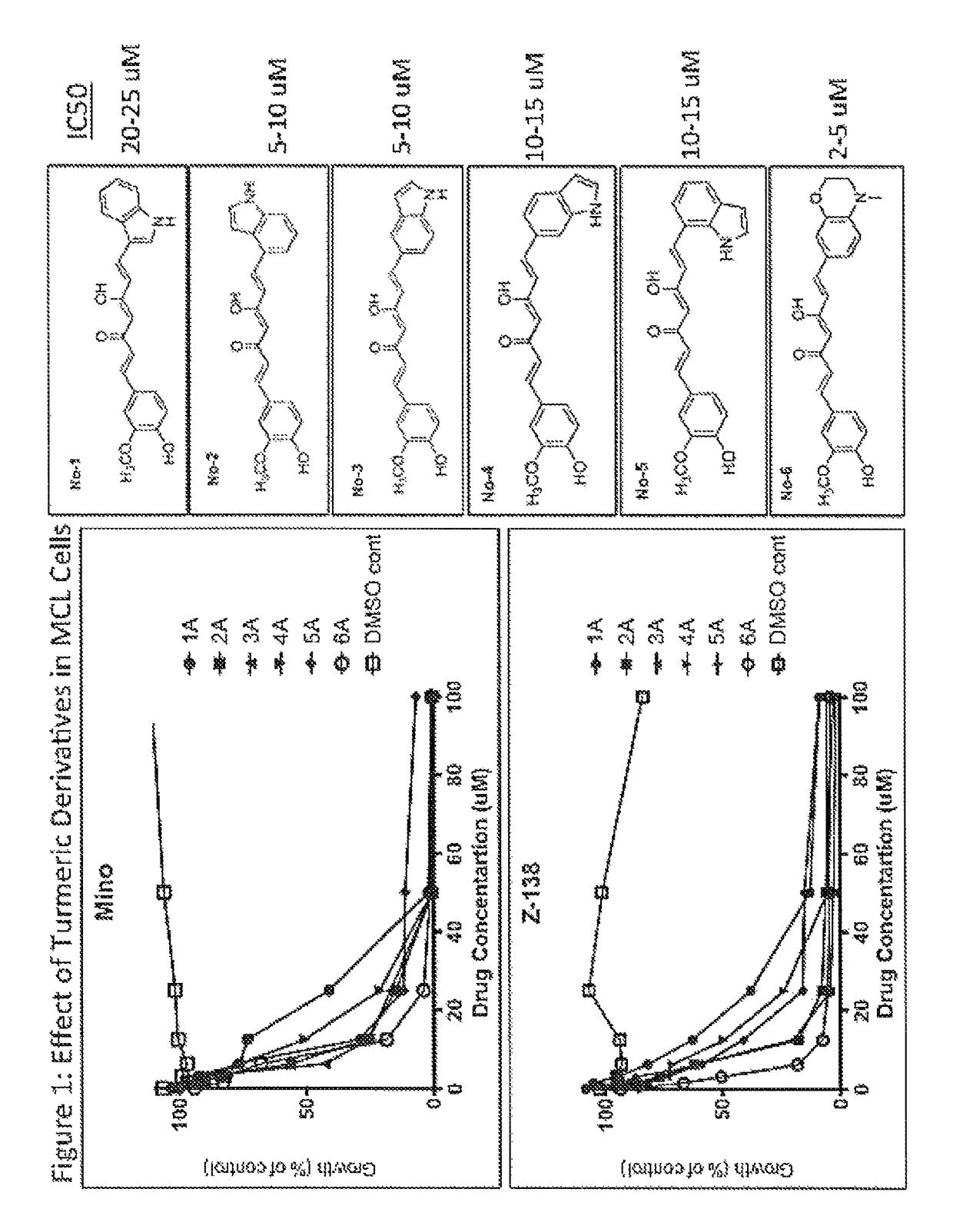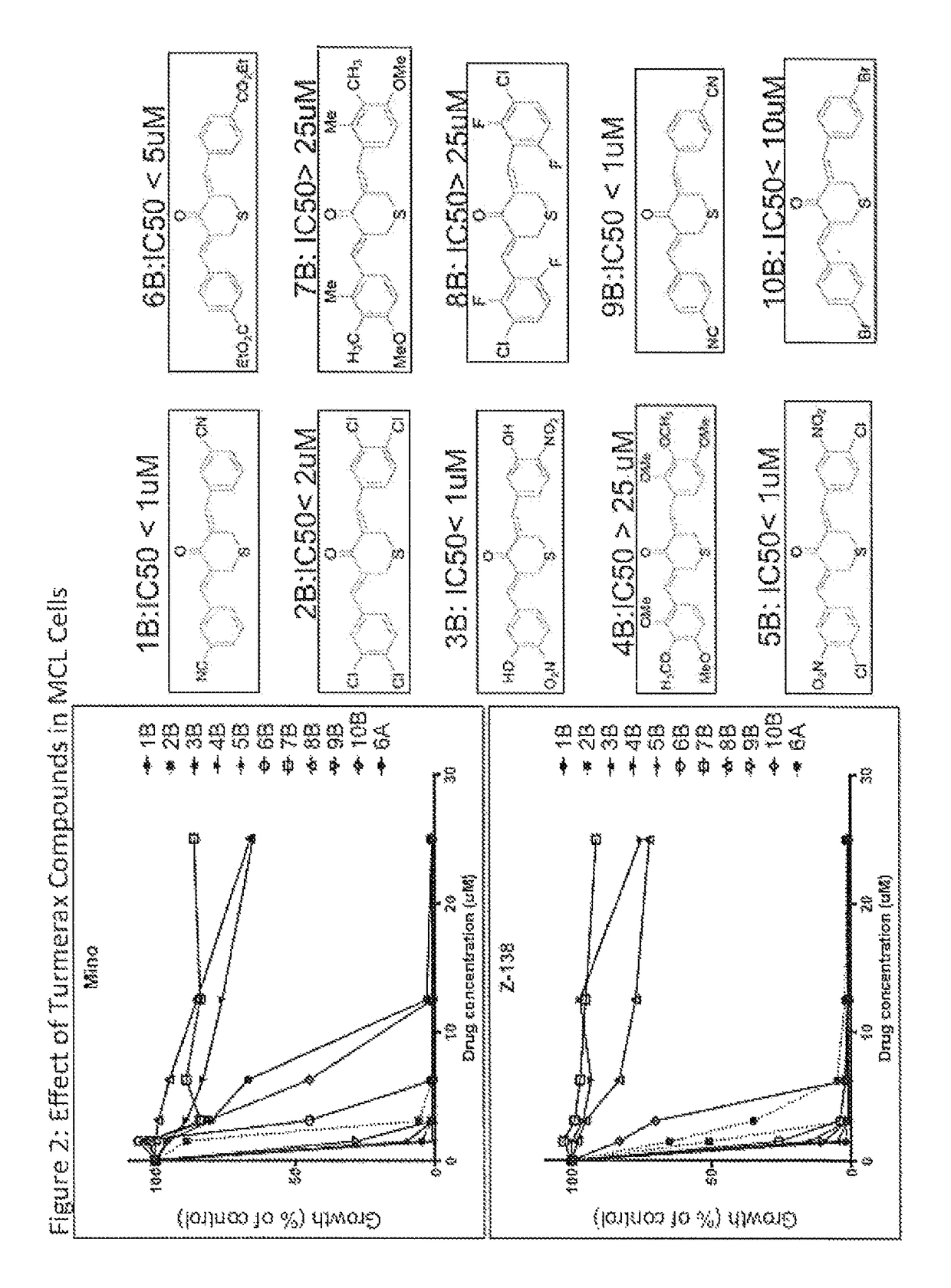Compounds for treating inflammatory and hyperproliferative diseases
a technology of compounds, applied in the field of compounds for treating inflammatory and hyperproliferative diseases, can solve the problems of early mortality and treatment failure, and achieve the effect of enhanced anti-inflammatory effects and little or no toxicity
- Summary
- Abstract
- Description
- Claims
- Application Information
AI Technical Summary
Benefits of technology
Problems solved by technology
Method used
Image
Examples
example 1
[0136]Turmerax compounds are newly synthesized chemical agents with some similarities to a component of the ginger spice turmeric, and its yellow pigment curcumin. Over novel turmerax analogs (tetrahydro-3,5-bis[phenylmethylene]-4H-thiopyran-4-one derivatives) have been designed and synthesized using cyclic thioketone and different substituted aromatic aldehydes by treating with concentrated hydrochloric acid in ethanol at 100° C. These compounds were tested for anti-inflammatory and anti-proliferative activity. Overall the results indicate that modification could enhance the anti-proliferative effects as well as the anti-inflammatory effects of related compounds such as curcumin. The study establishes a structure-activity relationship that will be used to guide further design of newer and more potent analogs of natural product turmeric components.
[0137]The general procedure for the synthesis of symmetric turmeric analogs is shown in Scheme 1. The bis(benzylidine) derivativ...
example 2
[0163]Understanding the Mechanisms of Action of TMX-1.
[0164]The above results indicate that TMX-1 is highly effective in inhibiting lymphoma cell growth, but its mechanism of action is still unclear. To determine whether TMX-1 can induce apoptosis in lymphoma cells, we treated a diffuse large cell lymphoma (DLBCL) cell line (LY-10) with TMX-1 in a dose-dependent manner for 24 hrs. Control and treated cells were analyzed for apoptosis using Annexin V assays. The results showed that TMX-1 is highly effective (up to 80% at 500 nM drug concentration) in inducing apoptosis in LY10 cells (FIG. 12A). Next, we test whether TMX-1 can induces DNA damage in LY-10 cells. As shown in FIG. 12B, the marker for DNA damage, pH2AX, was significantly increased in TMX-1 treated cells. In addition, the anti-apoptotic protein bcl-2 was cleaved after TMX-1 treatment in LY-10 cells, suggesting one potential mechanism of TMX-1 inducing apoptosis in LY-10 cells is through the intrinsic mitochondria pathway. ...
PUM
| Property | Measurement | Unit |
|---|---|---|
| volume | aaaaa | aaaaa |
| concentration | aaaaa | aaaaa |
| structure | aaaaa | aaaaa |
Abstract
Description
Claims
Application Information
 Login to View More
Login to View More - R&D
- Intellectual Property
- Life Sciences
- Materials
- Tech Scout
- Unparalleled Data Quality
- Higher Quality Content
- 60% Fewer Hallucinations
Browse by: Latest US Patents, China's latest patents, Technical Efficacy Thesaurus, Application Domain, Technology Topic, Popular Technical Reports.
© 2025 PatSnap. All rights reserved.Legal|Privacy policy|Modern Slavery Act Transparency Statement|Sitemap|About US| Contact US: help@patsnap.com



